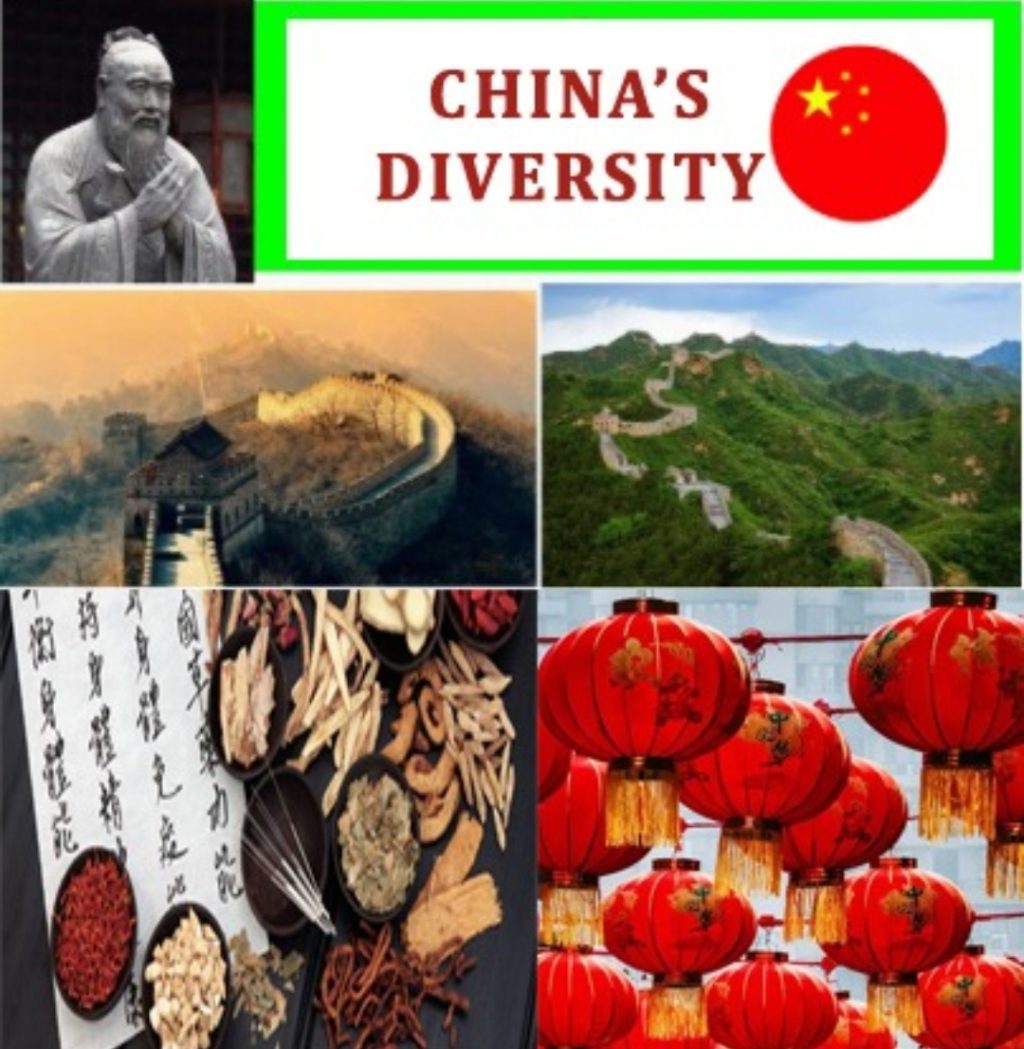Exploring the Unique Diversity of China’s Historical Aspects



This article has been written by Ms. Maryam Jan and Ms. Saba Hashmi. Ms. Maryam Jan is Visiting Lecturer and MPhil Research scholar in the Department of Sociology, University of Karachi, Karachi. Ms. Saba Hashmi is Visiting Lecturer and M.Phil Research Scholar in the Department of Sociology at the University of Karachi, Karachi. Authors are Winners of the Article Writing Competition (3rd position) on the theme “China’s Cultural Footprint Through the Ages” held in March-April 2024
China has a history spanning over 5,000 years, making it one of the oldest continuously existing civilizations in the world. Numerous dynasties have come and gone, each leaving their stamp on Chinese culture and society. Rich biological, cultural, and linguistic diversity are found in China. There are many more ethnic groups, distinguished by genealogy, language, religion, and culture, both outside and within the officially recognized fifty-six ethnic groupings. These ethnicities have affected Chinese history during many millennia of coexistence; two of them, the Mongols and Manchus, founded dynasties that ruled over China for a large portion of the previous millennium. Although Han Chinese is the majority, there are sizable communities of Zhuang, Hui, and Uyghur ethnic minorities.
The first thing to consider is Chinese language that is one of the oldest and most complicated languages in the world which has several varieties. For the Chinese people, their written language which is based on characters rather than an alphabet is a source of pride and identity. Their language as Han Chinese mentions, a moniker derived from the Han dynasty (202 BC–AD 220). Thus, Han Chinese should be separated from the minority non-Han languages spoken in China. Roughly 6% of people speak more than 50 of these languages, including Tibetan, Russian, Uighur, Kazakh, Mongolian, and Korean. China’s language reform effort of the 20th century gave rise to the world’s most ambitious language planning scheme. The program aims to accomplish three goals: (i) reduce the number of characters in classical written Chinese writing, as well as the symbol of strokes required to record a character; (ii) popularize the Beijing-based variation, which has been selected as the quality; and (iii) Present a phonetic alphabet that will eventually alter the Chinese characters in daily use. Due to the present written Chinese reform movement’s success, it is currently less commonly employed.
Furthermore Confucianism, Taoism, and Buddhism are only a few of the many philosophical traditions that existence in China. These schools of thought have had a significant impact on Chinese politics, ethics, and society.Chinese art and literature have a rich and lengthy history, encompassing a wide range of artistic endeavors such as calligraphy, ceramics, poetry, and painting. The ideals and ideologies of Chinese culture are frequently reflected in these artistic creations. Chinese literature has had a significant cultural impact on the literary traditions of other Asian nations, especially Korea, Japan, and Vietnam. In these nations, the Chinese language was not only adopted as the primary literary medium until the 20th century, but certain writers also chose to write in Chinese.
Another thing to consider is China was an agrarian nation for a large portion of its history, and farmers relied on the solar terms to tell them when to sow, when to harvest, and when to do other crucial tasks in the agricultural cycle. Similar to the Farmer’s Almanac in the West, this knowledge was amassed through time with the conviction that farming ought to be done in harmony with the cycles of the natural world. Chinese people have been utilizing the solar calendar for farming for decades. They have also utilized it to help them decide what to wear, how much exercise and sleep to get, and what to eat. Many Chinese, both domestically and abroad, think that with the aim of live a long and healthy life, we must follow the natural flow of nature.
Yet another consideration is natural produce and conventional medical treatments are quite essential. Some parts of the world have practiced traditional Chinese medicine, Ayurveda, Kampo, traditional Korean medicine, and Unani that have developed into well-organized, regulated medical systems. Morphine the first pharmacologically active compound was solitude from opium in 1805, only a less percentage have been scientifically studied of the current plant for their bioactivities. However, modern medicine has already made essential contributions like natural products and traditional medicines. Natural products and conventional medicines provide unequaled benefits when it comes to developing new pharmaceuticals. These advantages include a wealth of clinical experiences also a unique diversity of chemical structures and biological activity.
In-addition the variety and flavors of Chinese food are well-known throughout the world. There are many different meals and cooking techniques in China because each region has its own unique culinary traditions. Chinese culinary culture is vast and varied, having developed over thousands of years. It is renowned for using a broad range of ingredients, intricate flavors, and cooking methods. The history of Chinese food is extensive and rich, dating back thousands of years. It is thought that Chinese food started to take steps during the Shang Dynasty (16th-11th century BC), as evidenced by the old known Chinese cookbook, which belongs to the Han Dynasty (206 BC-220 AD). Various dynasties and geographical areas created distinctive culinary cuisines over the ages. For instance, the cuisine of the common people was more straightforward and rustic during the Ming Dynasty (1368–1644), whereas the imperial court was renowned for its opulent and intricate meals. Throughout history; different cuisines have also affected Chinese food. For instance, China adopted new culinary methods and ingredients from the Middle East and Central Asia thanks to the Silk Road trading routes. In a similar vein, new foods like potatoes, tomatoes, and chili peppers were brought to China by European settlers in the 16th century, and now days they are mainstays of Chinese cuisine.
In conclusion China has played an important role in affecting the development of various societies throughout history as a result of its inventions, culture, and philosophy extending throughout Asia and beyond. China’s distinct historical diversity has had a long-lasting influence on the world stage. China has influenced many facets of world culture, trade, politics, and thought, from its rich cultural legacy to its technical advancements and philosophical ideas. Understanding and valuing China’s historical variety will be essential in promoting intercultural understanding and influencing our shared future as the globe changes.


